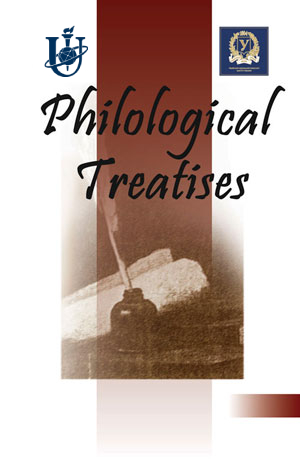ENGLISH PHRASEOLOGICAL UNITS AS REPRESENTATIVES OF NATIONAL AND CULTURAL SPECIFICITY
Keywords:
phraseological units, cultural specificity, national-cultural context, national-cultural specificity, idioms, socio-cultural context, national identity.Abstract
The article investigates the national and cultural aspect of phraseological units of the English language. This field is underdeveloped, but attracts more and more attention of linguists. This article focuses on highlighting the national and cultural specificity of phraseological units in such areas as cooking, weather, sports, social inequality and history. Each of the above areas is represented by several examples of phraseological units, with an explanation of the meaning and analysis of the cultural component. Understanding the cultural aspect of idioms is important for effective intercultural communication. Each phraseological unit has its own history and influence on modern culture around the world, as English remains the main international language of communication. The article expands the understanding of the relationship between language and culture, emphasizing that culture has a significant impact on both the language of its people and global communication in the world. Each phraseological unit analyzed in the article carries important information about the history, development and formation of the nation as such. Each phraseological unit connects the modern life of the British with their historical past. Therefore, the purpose of the article is to explore and deepen the understanding of the cultural aspect of phraseological units for better communication in international discourse. The study has highlighted the close relationship between language, culture and British national identity.References
Ayto J. Oxford Dictionary of Idioms. Oxford University Press, 2020. p. 429
Basgirova N. National origin of the phraseological BBC news More than 20 million Britons 'physically inactive' URL: https://www.bbc.co.uk/news/health-39457993
Bebko S. The main tendencies of translating phraseologisms with ethnocultural
Components, 2017 URL: https://dspace.nuft.edu.ua/jspui/bitstream/123456789/26116/1/Bebko_article.pdf
Boers F., Demecheleer M., Eyckmans J. Cross-cultural Variation as a Variable in Comprehending and Remembering Figurative Idioms, 2004 URL: https://www.tandfonline.com/doi/abs/10.1080/1382557042000277449 Received: 27 October, 2023
Cambridge Dictionary URL: https://dictionary.cambridge.org
Collins Dictionaty URL: https://www.collinsdictionary.com
Jefferies R. Hodge and his masters, 1880 URL: https://web.archive.org/web/20170810170836id_/http://www.richardjefferiessociety.co.uk/downloads/HODGE%20AND%20HIS%20MASTERS.pdf
Shakespeare W. The Tragedy of Antony And Cleopatra, 1607 URL: https://web.archive.org/web/20170810140023id_/http://shakespeare.acobb.com/ebooks/Antony%20and%20Cleopatra.pdf
Trudgill P. Dialects in contact. Great Britain, 1986. p. 174
Tymchuk O. Linguocultural aspect of phraseological units in American English. URL: http://molodyvcheny.in.ua/files/journal/2020/3.2/26.pdf
Units in modern english, 2021 URL: file:///C:/Users/31/Downloads/9391-Текст%20роботи-17199-1-10-20210303.pdf
Wierzbicka A. English : Meaning and Culture, 2006 URL: http://eprints.dinus.ac.id/6245/1/33895172-English-Meaning-Culture.pdf
Moiseienko L. TTheoretical and methodological principles of phraseological unit research. Kyiv, 2013. P. 159-162.
Spitsa M., Phraseologism as an object of study in a foreign language audience (expediency of use and selection criteria). Poznań, 2020. P. 157-166.
Tikan H., Yarmak O. Phraseological means of expressing cultural identity of representatives of English and Ukrainian linguistic cultures. URL: file:///C:/Users/31/Downloads/131436-Article%20Text-282082-1-10-20180517.pdf














